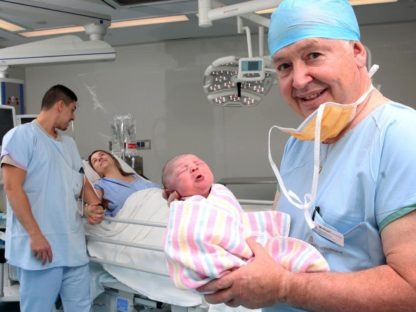Soaring house prices have had a negative impact on the birth rate in the new state, which has suffered a baby shortage this year.

New South Wales`s birth rate has regressed for the first time in five years, according to the latest mother-to-child report released on Saturday.
Demographers are pointing directly at the surge in house prices during that period.
In 2013, the number of new-born babies was 96971, down 1.2 percent from 95825 in 2017.
Nick Parr, a demographer at Macquarie University, says there are many factors that affect the birth rate, including the cost of housing in Sydney.
"rising house prices are a factor," Professor Nick Parr said in an interview. "those who want to own a house must have two sizeable incomes in order to be able to afford it. Economic and time pressures are responsible for the decline in fertility."
Higher education is also a factor, in some low-birth suburbs, such as Chatswood, where more mothers have a master`s degree.
Professor Nick Parr said: "the educational trend shows that there are more and more people going to college, and this phenomenon is also related to late childbearing."
Professor Edith Gray, a demographer at the Australian National University, says the decline in fertility is linked to lifestyle choices.
"it has to do with the cost of living and education. We know that as the level of education improves, the number of children will decrease.
Fertility rates are falling in their twenties, women are getting educated and building careers, so the time to have children has been delayed.
Another demographer, Professor James Raymer, says housing is also a factor.
"We like big houses, good jobs, and women are at a disadvantage," Professor James Raymer said. "you don`t have much time to have children until you`re in your 30s."
The average age of New South Wales mothers also rose from 28.9 in 2013 to 30.7. More than 1/3 babies are now born to mothers between the ages of 30 and 34.
Efforts to deliver naturally also stalled, with 33.8 percent of caesarean births in New South Wales last year and 21.3 percent last year, up from 18.7 percent in 2013.
Mothers with private health insurance are more likely to have a caesarean section, and nearly half now opt for a C-section rather than a natural birth. Only 45% of privately insured mothers gave birth naturally and 42% chose caesarean section. In the public health-care system, 60 per cent of parturients are parturients, compared with 27.8 per cent of caesarean births.
Older mothers are thought to be one of the reasons for the increase in caesarean section rates.
The good news is that the biggest drop in fertility was teenage pregnancy, down from 3 percent in 2013 to 2 percent in 2017.
The teenage pregnancy rate among indigenous women under the age of 20 also fell from 17.6 per cent to 12.3 per cent.
On the other hand, mothers over the age of 40 had a 4.2% pregnancy rate, more than double the teenage pregnancy rate.
Finally, smoking during pregnancy was addressed, from 9.7% to 8.8%.
Sixty percent of Australian mothers are Australian mothers, followed by Indian mothers (4.7 percent) and Chinese mothers (4.6 percent).

